If you’re worried about your joint health, you may wonder, what does arthritis knee pain feel like? In this post, we highlight the signs and symptoms of knee osteoarthritis. We also explain treatment options, and when it’s time to see a doctor.
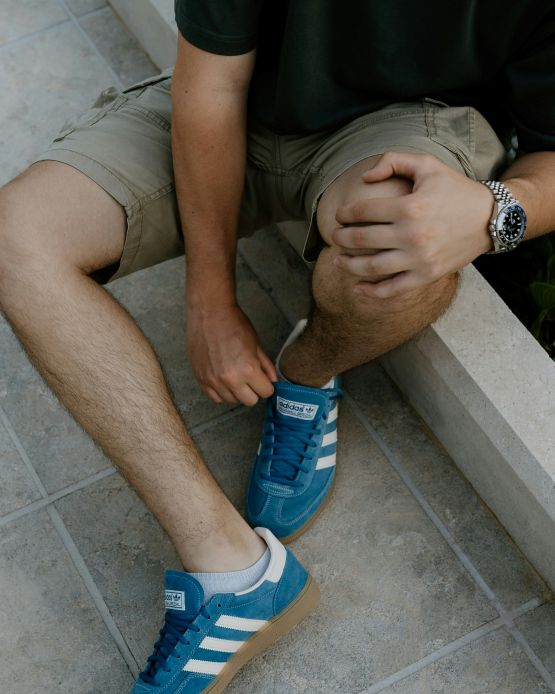
What Does Arthritis Knee Pain Feel Like?
While every person is different, knee osteoarthritis pain often feels like a dull ache. However, at times the pain can be sharp or even wake you up at night. For some, the discomfort is constant, while others experience intermittent pain that’s noticeably worse following high-impact activities or extended periods of movement. In addition to pain, osteoarthritis in your knee joint can cause stiffness. Your range of motion may be reduced, and the area may be tender to the touch. Bone spurs could form around your knee joint, causing hard, noticeable lumps to form. Your knees may feel wobbly, or they could lock up when you want to move. And you may notice cracking or popping sounds when you engage in weight-bearing activities.
Finding Relief at Home
Initially, you may find knee pain relief without medical intervention. Over-the-counter medications, icing the joint and engaging in physical therapy can all help make arthritis knee pain feel more manageable. However, osteoarthritis is a progressive condition. So, with time, you may need to seek medical intervention in order to manage your pain and preserve your mobility.
What Does Arthritis Knee Pain Feel Like Without Intervention?
Untreated knee osteoarthritis will worsen over time, resulting in increased pain, reduced range of motion in your joint and potential limits on your mobility. Of course, surgical treatment for arthritis in the knee is very invasive, and can result in months of rehab and recovery. Want to manage your knee pain due to arthritis without undergoing knee replacement surgery? GAE, or genicular artery embolization, is a minimally invasive procedure that reduces inflammation in the lining of your knee joint. In turn, patients experience pain relief and improved mobility while delaying or avoiding surgery altogether. To see if GAE is the right way for you to make arthritis knee pain feel better, we encourage you to contact our team at the Georgia Knee Institute and request a consultation.
If you have osteoarthritis of the knee and you want to find relief, there are knee replacement alternatives. And, due to medical advancements, many relieve pain without surgery. Today, we'll explore several options gaining popularity in 2025.
Genicular artery embolization (GAE): Proven knee replacement alternatives
GAE is a non-surgical knee replacement alternative that our Interventional Radiologists perform at the Georgie Knee Institute. The procedure relieves arthritis pain and inflammation by restricting blood flow to the affected knee joint lining. Backed by science, this 2020 study shows that GAE can effective relieve or reduce moderate to severe osteoarthritis knee pain. And it may prevent disease progression and limits on mobility.
New Findings on Metformin
Scientists at Monash University shared new research on the diabetes drug Metformin. They found that obese or overweight diabetic patients could relieve OA knee pain by taking this medication. Now, they emphasized that the small study size (of just 107 participants) meant that the study should be repeated with a larger sample size. Still, chief researcher Professor Flavia Cicuttini noted this could provide an important alternative to knee replacement surgery. And that's a big deal, since she noted that “Patient dissatisfaction with knee replacements is already high at between 20-30 per cent, even when the operation is technically perfect. Dissatisfaction rates are highest when the operation is done for early knee OA... The best outcome for patients is to delay the knee replacements until it is absolutely needed.”
In-Ear Nerve Stimulation: An Emerging Option
Emphasizing the importance of finding more knee replacement alternatives, the team at UT El Paso is investigating in-ear vagus nerve stimulation for OA knee pain relief. Already, their trials found that 37% of patients found significant relief from this treatment. And it was non-invasive, with no significant side effects. Moving forward, future trials hope to confim that the relief was not the result of a placebo effect.
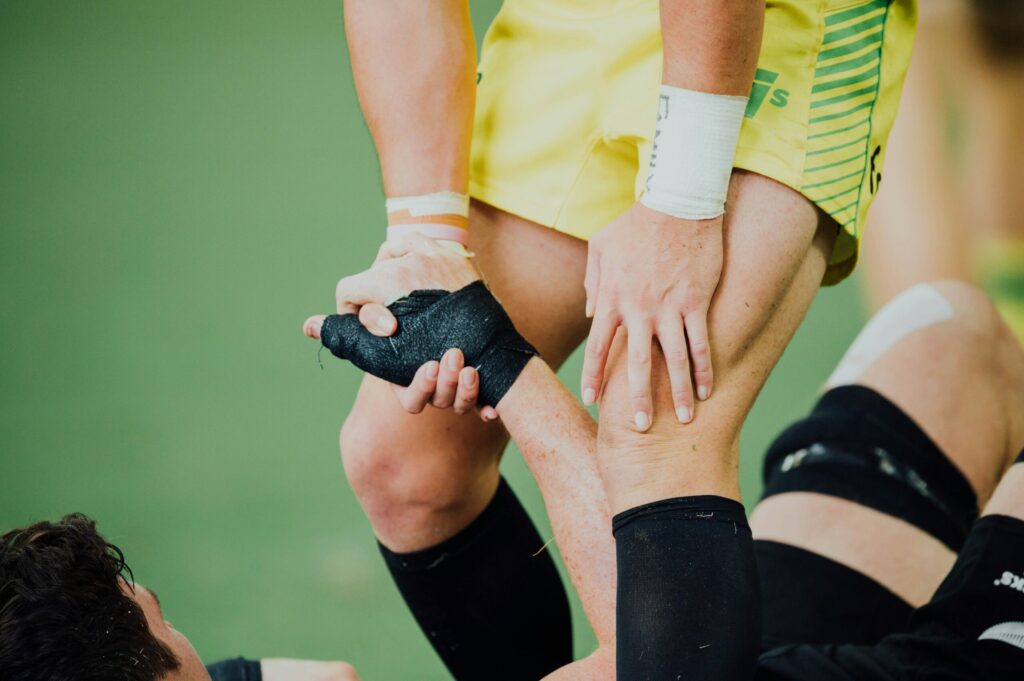
Injections for Arthritis Knee Pain
Some patients prefer injectible knee replacement alternatives. One option involves injecting hyaluronic acid to the inflamed joint, providing lubrication and shock absorption to reduce pain. However, the Arthritis Foundation does not endorse this treatment due to limited research.
The same is true for dextrose solution injections, which are supposed to fight osteoarthritis knee pain. through the power of regenerative medicine. In theory, this injection sends reparitive blood flow to the knee, reducing pain and stiffness. But, again, it is not Arthritis Foundation endorsed.
Now, patients with mild to moderate arthritis knee pain may reduce pain and boost mobility with Platelet Rich Plasma (PRP) injections. With results that last up to one year, this injection stimulates your body's own healing ability. However, more research is needed to confirm its efficacy for knee pain due to arthritis.
Knee replacement alternatives backed by research
We know you want to relieve your knee pain without having surgery. But we also know that you want knee replacement alternatives that have been well researched. And that's exactly what we provide! Click here to request an appointment at the Georgia Knee Institute and discover if you're a candidate for GAE!
Knee pain caused by osteoarthritis can keep you from enjoying your favorite activities. Once, your best treatment option would have been a total knee replacement surgery. But the surgery is expensive and invasive; afterward, you face a long recovery, and you might not find adequate relief. As such, many people hoped for a non-surgical alternative. Today, that's available thanks to supplements, medications such as semaglutide and genicular artery embolization (GAE), a minimally-invasive procedure that reduces or eliminates osteoarthritis discomfort in the knee without general anesthesia or overnight stays in the hospital. Learn all about this and other treatment options in today's post.
Turmeric Supplements
If you want to address your pain in a completely non-invasive manner, try taking a daily turmeric supplement. Why? This study in the Annals of Internal Medicine revealed that people who took 1000mg of a turmeric supplement for a 12-week period experienced noticeable osteoarthritis pain relief in their knees. Still, the supplements didn't help reduce swelling or cartilage damage, so many needed to seek alternative treatment options.
Semaglutide as a Non-Surgical Treatment for Knee Pain
New research published in The New England Journal of Medicine revealed that a once weekly dose of Ozempic, Wegovy or a generic semaglutide could provide knee pain relief when patients have osteoarthritis and are obese. However, this medication is unlikely to prove effective in individuals who are already at a healthy weight. For that reason, these patients may wish to explore GAE as a non-surgical treatment option.
Medications Under Investigation
The drug company Novartis had been conducting a proof-of-concept clinical trial, studying an injectable medication to provide osteoarthritis patients with knee pain relief. But the trial didn't go as planned. And now, they've announced its termination after realizing that the medication was not delivering sufficient pain relief to make it a viable treatment option.
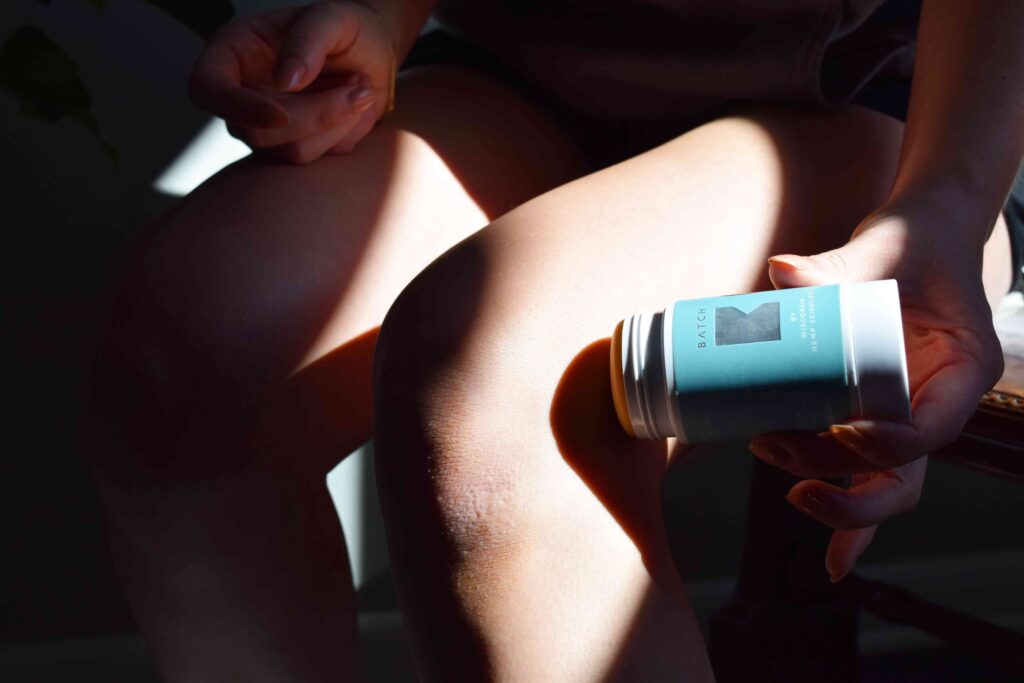
Genicular Artery Embolization: Non-Surgical Relief for Knee Pain
For many patients, GAE is a better knee pain treatment than knee surgery. Why, because the procedure is less-invasive and non-surgical, complication risks are minimal risk for complications. Avoiding overnight hospital stays and general anesthesia also makes GAE less expensive than surgery, and insurance will usually cover the procedure. Plus, by addressing inflammation, a key cause of osteoarthritis knee pain, it can effectively improve your quality of life by reducing pain and boosting mobility.
Inside the GAE Procedure
To perform the Genicular Artery Embolization, we direct a catheter to target the genicular arteries around your knee, then we deposit embolic material that will reduce blood flow to those arteries. With less blood flow comes less inflammation, allowing most patients to experience knee pain relief and improved mobility after GAE.
Inside the Post-GAE Recovery Period
Most patients resume normal activities a few days after starting their GAE recovery. But knee pain relief will first start 4-6 weeks after GAE. (Results will improve further over time.) Plus, because the procedure is minimally invasive, discomfort after GAE is typically mild, usually manageable with over-the-counter pain medication.
Do you want non-surgical knee pain relief? Do you want to treat knee osteoarthritis with an alternative to surgery? GAE could be your best treatment option. Click here to request a consultation at the Georgia Knee Institute, and we’ll review your candidacy for genicular artery embolization.
When you develop knee osteoarthritis, you may experience pain, swelling, stiffness and a limited range of motion in your joints. As such, you may need to seek a medical procedure in order to find relief. Unfortunately, diagnoses in post-menopausal women are on the rise, according to research. And, since younger patients often wish to delay or avoid knee replacement surgery, this could lead a large population of women to seek alternative treatment options. Here's what you need to know.

Knee Osteoarthritis after Menopause
After reviewing data from the 2021 Global Burden of Disease study to discover important health trends, this study noted a 1.3 fold increase arthritis diagnoses for post-menopausal women in the years between 1990 and 2021. Notably, there was an increase in all forms of arthritis, but cases of knee osteoarthritis increased the most. And, despite contributing factors including age and weight, researchers identified menopause as the biggest reason for this increase. For that reason, they noted that post-menopausal women should be given more frequent and better screenings to reduce their arthritis risk factors.
Finding Knee Pain Relief in Your 50s
Many women enter menopause (defined as not having a period for one full year) by the time they are 50. And passing that milestone means they immediately have an increased risk for knee osteoarthritis. Moreover, if you develop osteoarthritis in your 50s, you may need knee pain relief after several years. But, at that stage, you would not want to undergo knee replacement surgery, since implants typically need to be replaced after 20 years.
Are you dealing with knee osteoarthritis, but want relief without the need for invasive surgery? Do you want to avoid general anesthesia and overnight hospital stays while reducing your pain and protecting your mobility? Genicular artery embolization (GAE) could be right for you! This is a minimally invasive treatment that can help you delay or avoid surgery. Reach out to our team at the Georgia Knee Institute to start exploring your candidacy.
You may have heard that osteoarthritis knee exercises can help manage your condition. And, while you can't cure arthritis, you can help reduce pain and stiffness by getting regular exercise. Still, if you want long-lasting relief, you may need to explore medical solutions.

These osteoarthritis knee exercises can help
Any form of exercise can help build muscle strength, taking pressure off your joints. Exercising regularly will also help you maintain your weight, mobility and balance. Just remember, before you try any of these osteoarthritis knee exercises, be sure to clear your routine with your doctor:
- Stretch every day
- Work with weights, resistance bands, or weight machines, on alternating days
- On most days, engage in moderate, joint-friendly cardio such as swimming, walking and biking
- Practice yoga or tai chi to boost balance and posture and improve your sleep quality
Specific Stretches to Try Each Day
Daily calf and hamstring stretches can boost your flexibility and the range of motion in your joints while providing some knee pain relief. Before stretching, take a five-minute walk for a gentle warm up. Now, lie down and loop a bedsheet around your left foot, gently pulling your leg straight and keeping it that way for 20 seconds. With your hamstrings addressed, it's time to turn to stand up and pay attention to your calf muscles. Start by grabbing onto a chair for balance, bending your right leg and stepping back with your left. Slowly straighten the left leg behind you, carefully moving the heel toward the floor until you feel a stretch in that back leg. Hold your foot there for 20 seconds before switching sides. And take care with these any any other movements, so that you can avoid worsening your pain or causing any kind of joint damage.
Safer exercise with knee osteoarthritis
When exercising with knee osteoarthritis, these safety tips will help protect your joints. First, start slowly and pay close attention to your body. Make sure trainers or fitness instructors know that you have arthritis before you train with them. And stop exercising and rest if any movement causes pain.
When getting ready to try these osteoarthritis knee exercises, prepare your body with heat. After exercise, ice your joints for up to 20 minutes. And always avoid high-impact workouts, opting for low impact movement instead.
Relieve knee osteoarthritis without surgery
While some patients manage their pain with osteoarthritis knee exercises and other lifestyle measures, those who still experience arthritis pain can find relief without surgery. How? Explore the option of Genicular Artery Embolization (GAE) in Georgia.
This is a minimally invasive procedure that relieves pain and inflammation while helping defer or avoid knee replacement surgery. Performed by our interventional radiologist in Georgia, some patients can even delay disease progression by undergoing. Ready to see if you're a candidate for this procedure? Click here to request an appointment!
When you're looking for knee pain relief from osteoarthritis, you may face a lot of expenses, due to the ongoing cost of solutions such as medication and physical therapy. Even worse? They often fail to provide effective relief. So, if you want to alleviate knee osteoarthritis pain while preserving your mobility, sparing your wallet, and avoiding surgery? It’s time to learn more about GAE (genicular artery embolization), since the American Journal of Roentgenology (AJR) just concluded that this minimally invasive procedure is a cost-effective knee osteoarthritis treatment.

The Cost of Resolving Knee Pain Due to Osteoarthritis
Joint pain in the knees is a problem for at least 80% of individuals with osteoarthritis. As such, it's not surprising that providing those individuals with knee pain relief costs over $80 billion according to this just-released study. Now, you can treat knee osteoarthritis in a variety of ways, but this study looked at three of them: GAE, RFA [radiofrequency ablation] and CS [corticosteroid injection], exploring their associated costs over a four-year period. Here’s what their findings revealed.
GAE: The Most Cost-Effective Knee Osteoarthritis Treatment
GAE, RFA and CS, the three treatments compared in the study, all provide non-surgical knee pain relief. But when it comes to their associated expenses over the course of the study, researchers noted that “GAE was consistently the most likely cost-effective treatment option compared to RFA and CS.” They also hoped that this information would help patients narrow down their knee osteoarthritis treatment options.
Of course, how much you pay for the GAE procedure depends on several factors, including your insurance coverage. Still, this minimally invasive procedure will improve your quality of life by reducing your pain and improving your mobility, all without surgery. Want to learn more about GAE, from the costs to your candidacy for the procedure? Reach out to our team at the Georgia Knee institute so we can answer all your questions.
If you have knee osteoarthritis we know you want to avoid anything worsening your pain. So, how can you protect your joints and find lasting relief? Here's what you need to know.
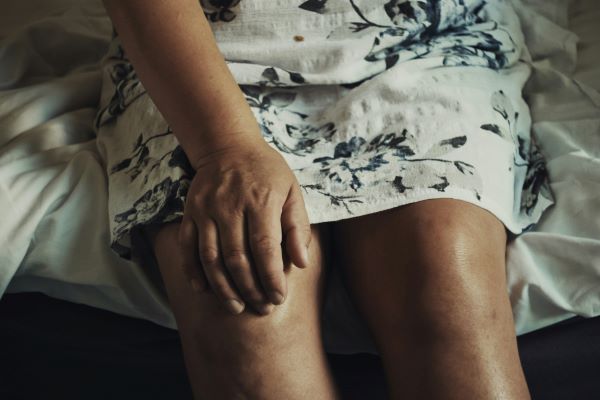
What Makes Knee Pain Worse?
To avoid triggering knee osteoarthritis pain, steer clear of these four triggers.
1. Avoiding movement.
If you have osteoarthritis, you may think that sitting still and resting your joints will help you find knee pain relief. But the opposite is true: moving your knees less actually weakens your joints. So, what's a better way forward? Speak to your healthcare provider about safe exercise choices such as cycling with osteoarthritis of the knee, since these movements can help lubricate your joints and preserve your mobility.
2. Carrying excess weight
Any pound you carry above your ideal weight puts excess pressure on your knee joints. In fact, weight is such a knee pain trigger, this study found that taking the weight-loss drug Semaglutide once a week helps individuals with obesity reduce knee pain. As such, reaching and staying at a healthy weight could reduce your osteoarthritis burden.
3. Wearing unsupportive shoes
If you walk around in shoes that lack support, or you wear high heels, you're upping the pressure on your knee joints. Instead, look for supportive footwear with plenty of shock absorption. That can lighten the load on your knees.
4. Pushing through pain
Early osteoarthritis pain may be managed with over-the-counter medications. However, since arthritis is progressive, this solution won't last forever. For that reason, you should start taking action as soon as you notice knee pain. Start by receiving a diagnosis from your healthcare, making sure to avoid what makes knee pain worse. Then, if you need further knee pain relief, we encourage you to reach out [/tx-appt-link] to the Georgia Knee Institute. Our interventional radiologists perform Genicular Artery Embolization (GAE) for knee pain relief. It's a minimally invasive procedure that relieves pain and inflammation without surgery. You can explore your candidacy and learn more about 'What is GAE' here.
GAE, or genicular artery embolization, is a non-surgical procedure to treat the knee pain of osteoarthritis. By choosing this minimally invasive treatment, many patients are able to delay or avoid knee replacements, making it an effective option for relieving joint pain.
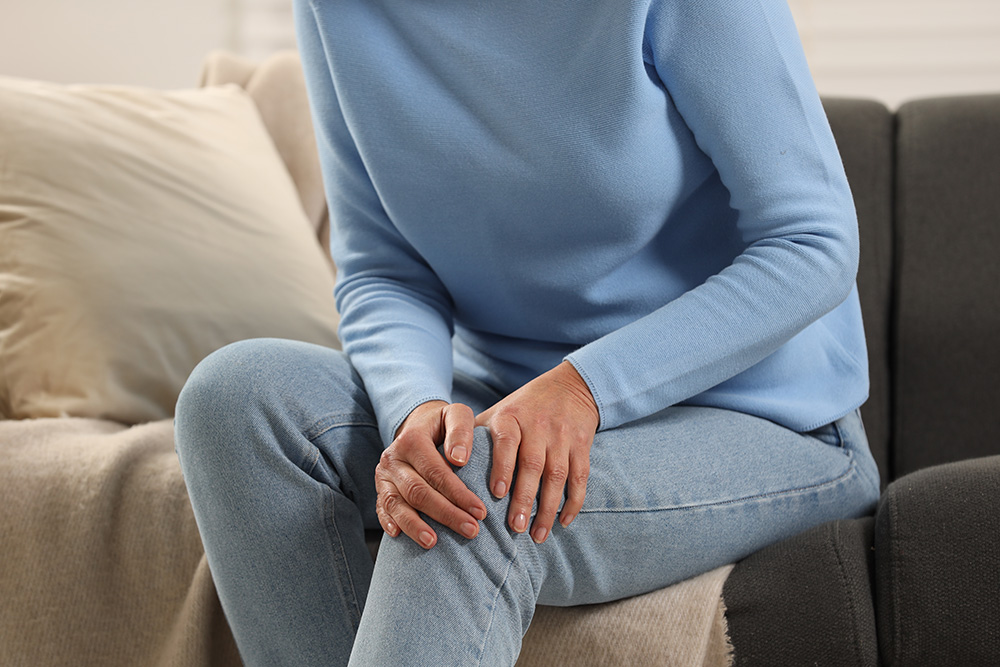
The Connection Between Osteoarthritis and Knee Pain
After turning 60, about 10% of men and 13% of women develop osteoarthritis, a disease that attacks the joint linings in your knees and other parts of your body. As a result, you may experience pain, inflammation, and mobility limits.
When living with knee osteoarthritis, you may be able to manage pain using over-the-counter anti-inflammatories. Some patients will have symptoms severe enough to require surgical relief. But some patients need a treatment option that falls somewhere in between these two pathways to relief. And if that sounds like what you're seeking, stick with us as we explore genicular artery embolization, beginning with an explanation of how the genicular arteries work in the body.
What are Genicular Arteries?
These arteries form a network to deliver blood to the knee joint. They can be altered by osteoarthritis. As such, when you block blood flow through the altered arteries via GAE, you can enjoy knee pain relief.
What to Expect from GAE
This is an ideal osteoarthritis treatment if you want to avoid or can't have surgery, but you can't find relief with conservative approaches. During GAE, the interventional radiologists at the Georgia Knee Institute insert a small catheter into the leg arteries supplying the knee joint. They then inject microscopic beads to the catheter, blocking blood flow to the synovium, also known as the hypervascular joint lining.)
Afterward, knee pain relief should become noticeable within four to six weeks, thanks to reduced inflammation and thickening in the synovium. Additionally, the GAE procedure may prevent the breakdown of cartilage, helping slow the progression of arthritic joint damage.
Who's a Good Candidate for Genicular Artery Embolization?
By providing prolonged joint pain relief, GAE can also help improve your mobility, while slowing the progression of arthritis and reducing inflammation. And because it is a minimally-invasive, outpatient procedure, patients enjoy shorter recovery periods without overnight hospital stays. In fact, most people can resume lightly-restricted, normal activities just one day after the procedure. As such, ideal GAE candidates are people who don't want to deal with surgery, incisions, staples, stitches or general anesthesia.
Ready to learn more about genicular artery embolization? Want to learn if you can preserve your active lifestyle despite your knee osteoarthritis? Simply request an appointment with the specialists at the Georgia Knee Institute. Together, we'll review your treatment options and find your best pathway to relief.
Living with knee osteoarthritis can be challenging and painful, but many find relief through exercise. Cycling is one of the most effective forms of exercise for managing knee osteoarthritis.
This low-impact workout not only helps alleviate pain and preserve joint health but also offers several cardiovascular benefits.
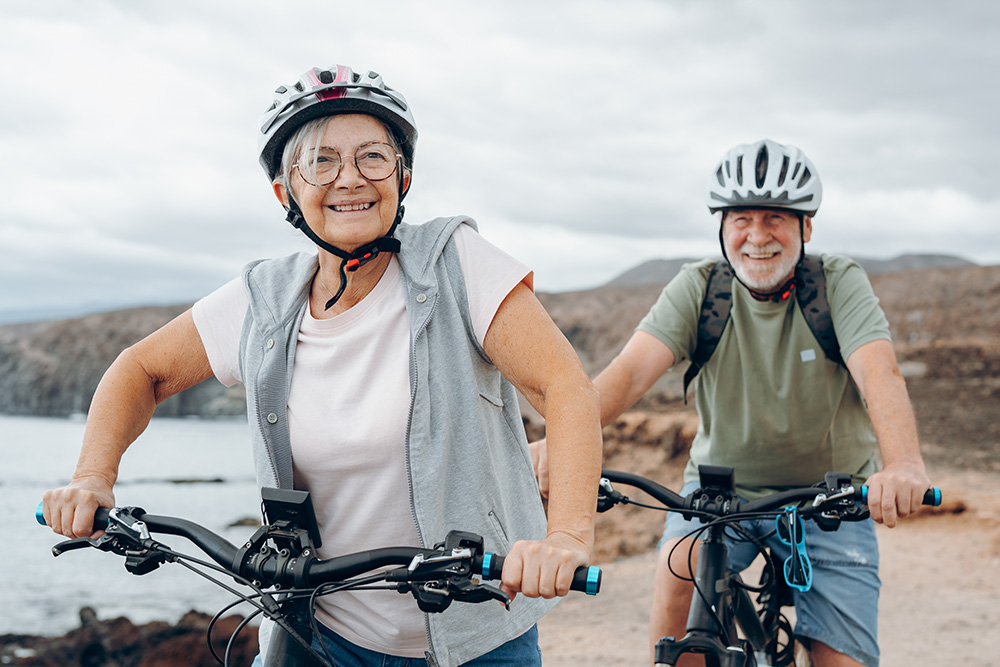
By incorporating cycling into your routine, you can maintain or even improve your range of motion, strengthen muscles that support your knee, and enhance your overall quality of life.
Keep reading to discover the key benefits of cycling with knee arthritis, whether indoor or outdoor cycling is right for you, and how to choose the right equipment and pace for your recovery.
Is Cycling Good for Knee Osteoarthritis?
Cycling with arthritic knees helps loosen up your joints without putting too much pressure on them—it’s like adding lubricant to a squeaky wheel. Additionally, this study found that people with osteoarthritis who biked enjoyed less knee pain and reduced evidence of joint damage.
Here are some key benefits of cycling with arthritic knees:
- Low-impact exercise: Reduces stress on knee joints.
- Muscle strengthening: Supports and stabilizes the knee joint.
- Improving joint mobility: Promotes lubrication and prevents stiffness.
- Pain relief: Improves overall quality of life.
- Weight management: Alleviates pain and slows the progression of osteoarthritis.
- Cardiovascular benefits: Enhances physical fitness.
- Mental health benefits: Reduces stress, anxiety, and depression.
Biking is a terrific exercise option for those with osteoarthritis knee pain. But is a stationary bike good for knees, or is an outdoor bike better?
Is a Stationary Bike Good for Arthritic Knees?
When addressing knee osteoarthritis with cycling, you may wonder biking outdoors or using a stationary bike is better. Luckily, both have proven benefits.
Using a stationary bike can be beneficial for those with knee arthritis due to:
- Controlled environment
- Safety and stability
- Accessibility
- Controlled and gradual progression
If you’re experiencing knee pain or are concerned about stability, a stationary bike might be the right choice. However, if you’re looking for a more engaging experience, cycling outdoors offers scenic changes that can encourage longer activity and adaptation to varying terrains.
Finding the Right Exercise Bike for Arthritis Knee Pain
Whether you cycle indoors or outdoors, choosing the right exercise bike is essential. Consider these types:
Indoor Bikes
Upright bike
These stationary bikes resemble traditional outdoor bicycles (upright riding position). They have adjustable resistance levels and are generally compact, making them suitable for small spaces. Upright bikes provide a good cardiovascular workout while maintaining a natural posture that can be comfortable for many users
- Recumbent bike
This option offers a reclined seating position with a larger seat and backrest, reducing strain on the lower back and joints and minimizing the risk of aggravating knee pain. Recumbent bikes are also easier to get on and off, making them a great option for those wanting a relaxed, comfortable experience.
Outdoor Bikes
- Cruiser bike
Cruiser bikes are designed for a slower pace on flat terrain. They are a terrific option for maintaining joint flexibility without excessive strain. They typically have a comfortable, upright seating position and wide tires, providing added stability. - Hybrid bike
Hybrid bikes are designed for versatility, combining road and mountain bike features. They are ideal if you enjoy cycling both on paved paths and in light off-road spaces, balancing comfort and performance.
Note: If you ride outdoors, take your bike to a professional for proper seating and handlebar height adjustments. When you have knee arthritis, cycling with your seat in a more elevated position can improve comfort, and raising the height of handlebars can alleviate neck or back pain.
Choosing the right bike type depends on your specific needs, preferences, and the severity of your arthritis knee pain. Consider factors like comfort, stability, speed, and the ability to adjust settings to find the bike that best supports your fitness goals.
Arthritis and Cycling: Finding the Right Pace
When addressing knee arthritis through cycling, the pace and intensity of your rides significantly impact joint health. Research suggests that low-intensity cycling is as effective as high-intensity cycling for improving joint function and reducing pain in knee osteoarthritis.
If you are new to arthritis and cycling, start slowly with short, flat rides. Your first session should last between five and ten minutes.
As you become more comfortable, gradually increase both the duration and intensity of your rides. Aim for moderate intensity and work towards achieving up to 150 minutes of biking per week. Always listen to your body and stop exercising if you experience any discomfort or pain.
If you experience new or worsening joint pain during or after cycling, discontinue your workouts immediately and consult with your doctor.
Focusing on Recovery
If you have knee arthritis, cycling is a valuable tool for loosening stiff joints and enhancing range of motion and mobility in individuals with knee arthritis.
However, it’s important to give your body time to recover after a workout. Engage in gentle stretching exercises that complement your cycling workouts.
If you find that exercise and lifestyle measures alone are not providing sufficient knee pain relief, request a consultation with the experts at the Georgia Knee Institute to explore whether genicular artery embolization is right for you.
What are the benefits of GAE (genicular artery embolization), one of the newer treatment options for osteoarthritis of the knee? While long-term data is limited, a recent study conducted at Berlin's Charity University Hospital has provided us with evidence supporting this procedure's ability to relieve knee pain and improve quality of life. Keep reading to learn more.
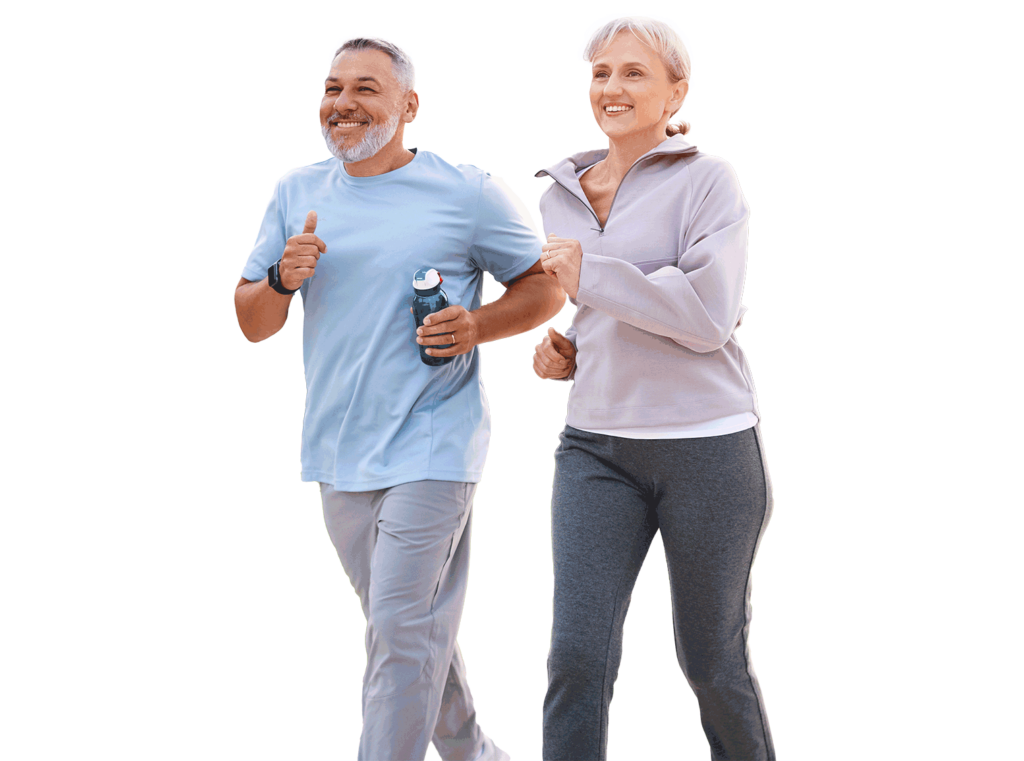
What is Genicular Artery Embolization?
This minimally-invasive interventional radiology procedure is available at the Georgia Knee Institute. It's designed to relieve arthritis-related knee pain by reducing blood flow to your genicular arteries (they surround the knee joint.) And blood flow is blocked when we inject small particles designed to the affected arteries. Afterward, you experience reduced inflammation and slower cartilage destruction, helping alleviate pain and slow progression of the disease.
What are the Benefits of Genicular Artery Embolization?
In our clinical practice, we see that patients experience knee pain relief, improved mobility and a better quality of life after undergoing GAE. Now, with the addition of data presented at the Radiological Society of North America, we can offer more scientific evidence to highlight the benefits of GAE.
During this study, German physicians followed 403 patients between the ages of 40 and 90 for one year after they underwent GAE at Berlin's Charity University Hospital. Each of these participants had moderate to severe knee osteoarthritis that couldn't be relieved with conservative treatment options. One year after each their successful GAE procedure, 87% of patients noted an improved quality of life and 71% reported pain reductions. Even better? Side effects associated with the procedure were minimal, and limited to 18% of participants who experienced temporary, minor skin coloration changes and/or mild knee pain, right after having GAE.
In announcing these findings, lead study author Dr. Florian Fleckenstein said, “GAE can effectively reduce knee pain and improve quality of life early after the treatment, with these benefits being maintained over the long term, especially for people who haven’t had success with other treatments like physical therapy or pain medications. This could potentially offer a new lease on life for many patients who suffer from debilitating pain and mobility issues, caused by osteoarthritis.”
Moreover, he concluded, “GAE has the potential to reduce the need for more invasive surgeries, lower health care costs and significantly improve the quality of life for countless individuals suffering from knee osteoarthritis."
Ready to explore the benefits of GAE in Georgia and see if you’re a candidate for this minimally invasive arthritis treatment? Just reach out to request an appointment with the team at the Georgia Knee Institute.






